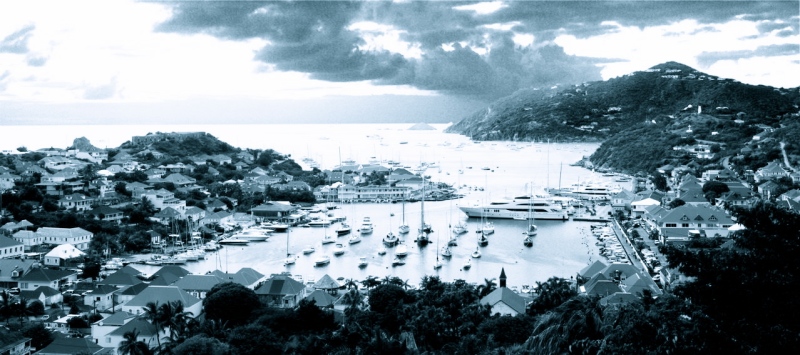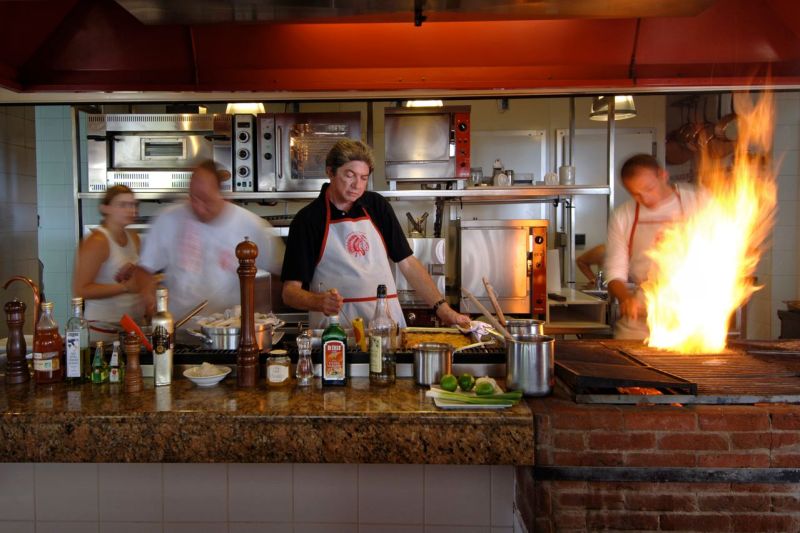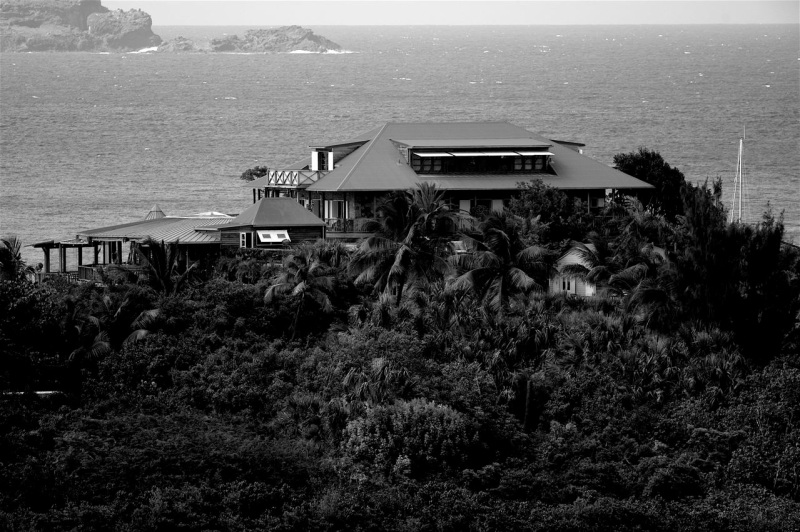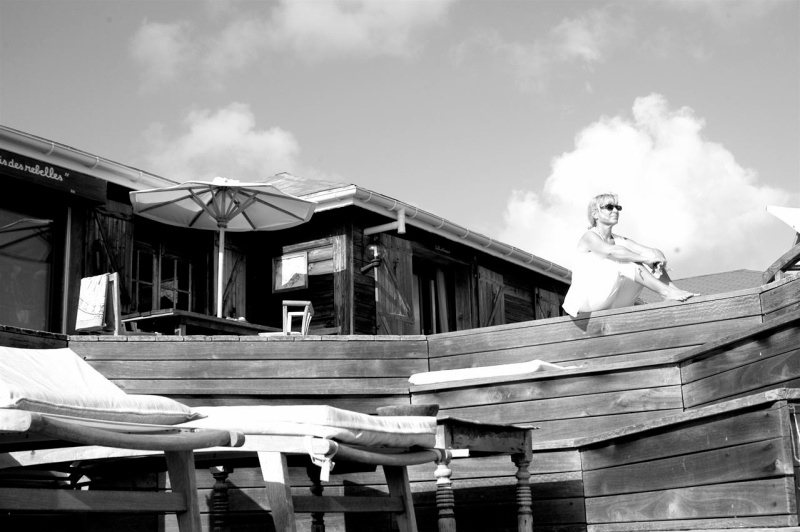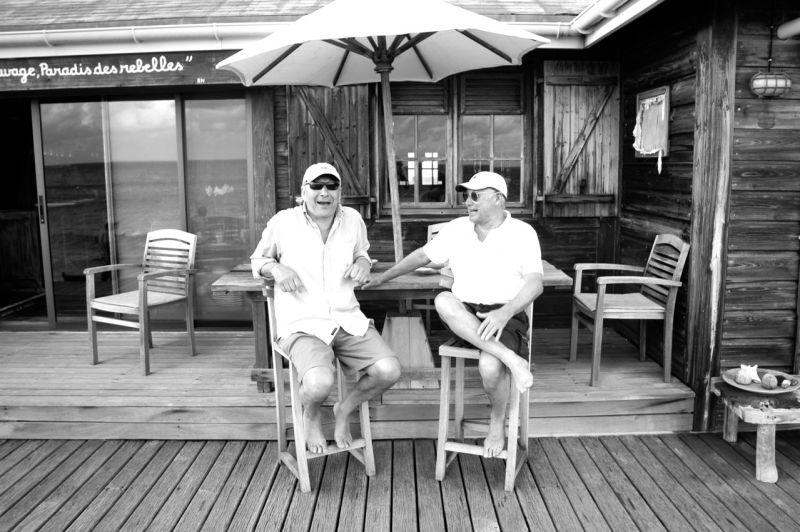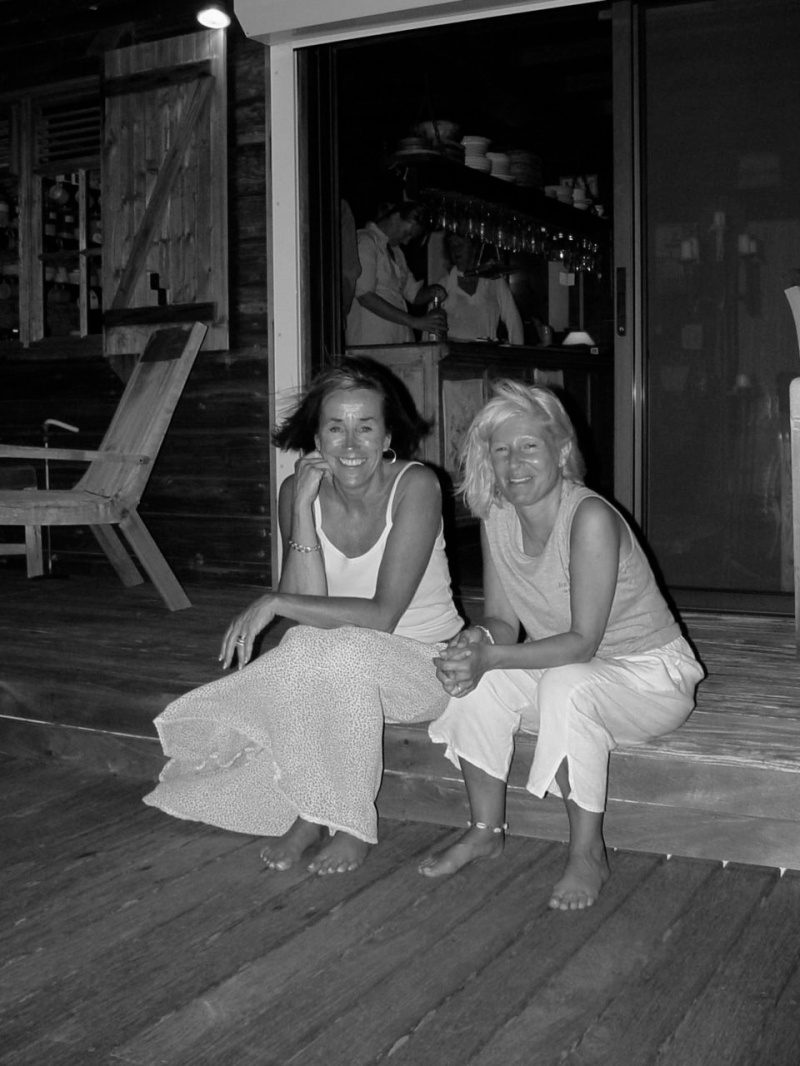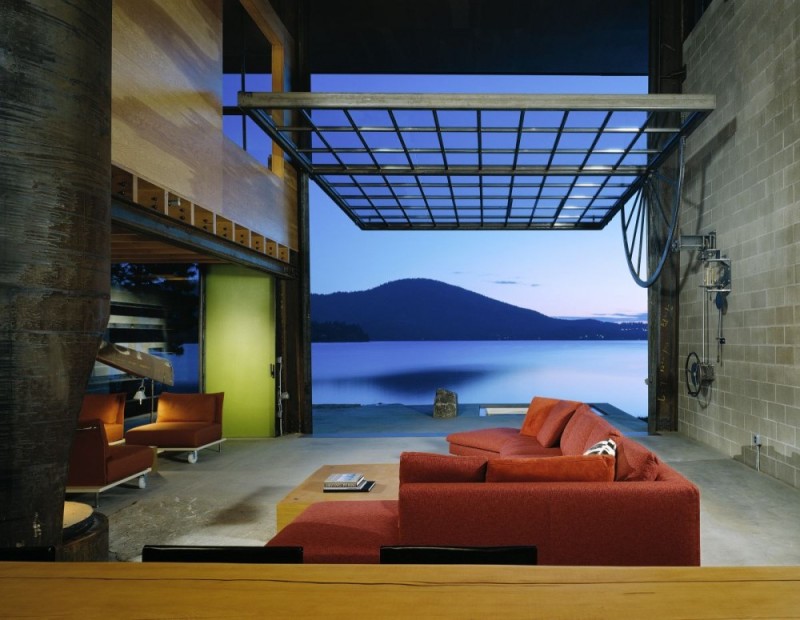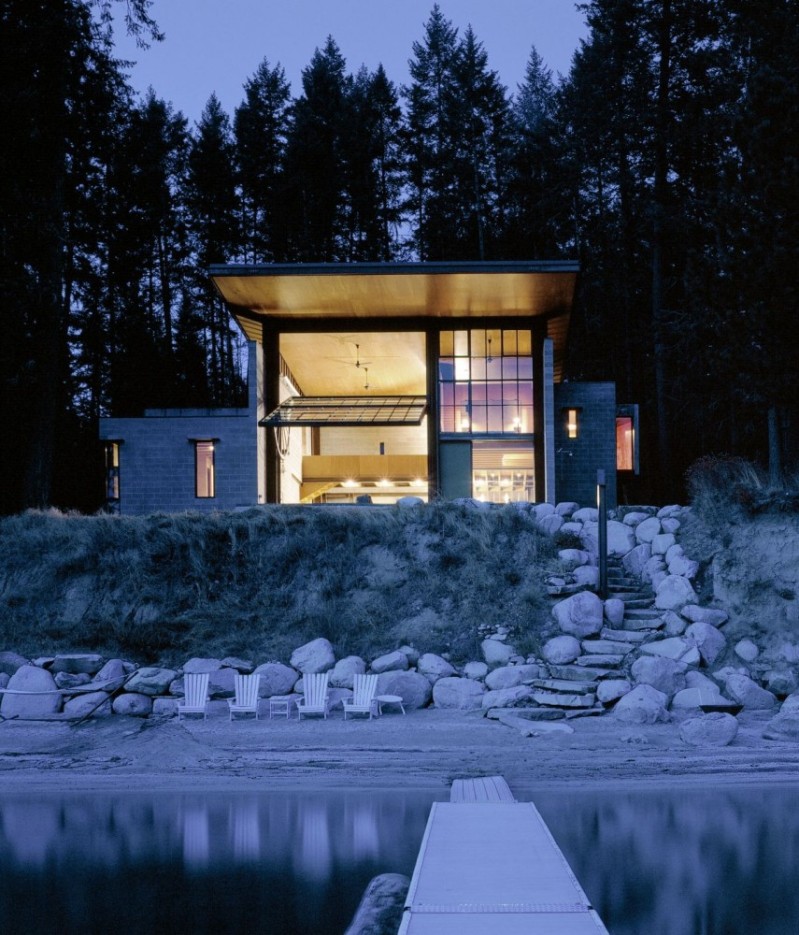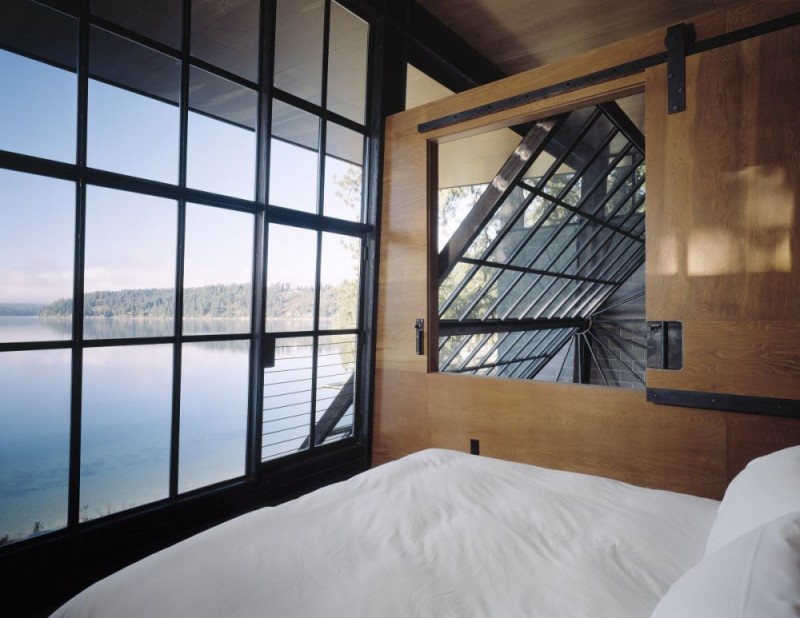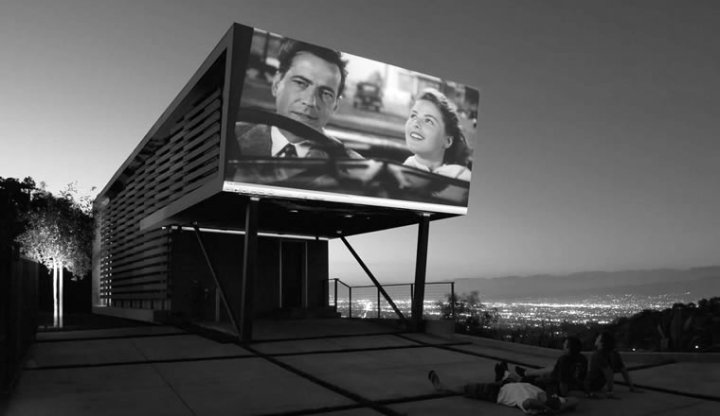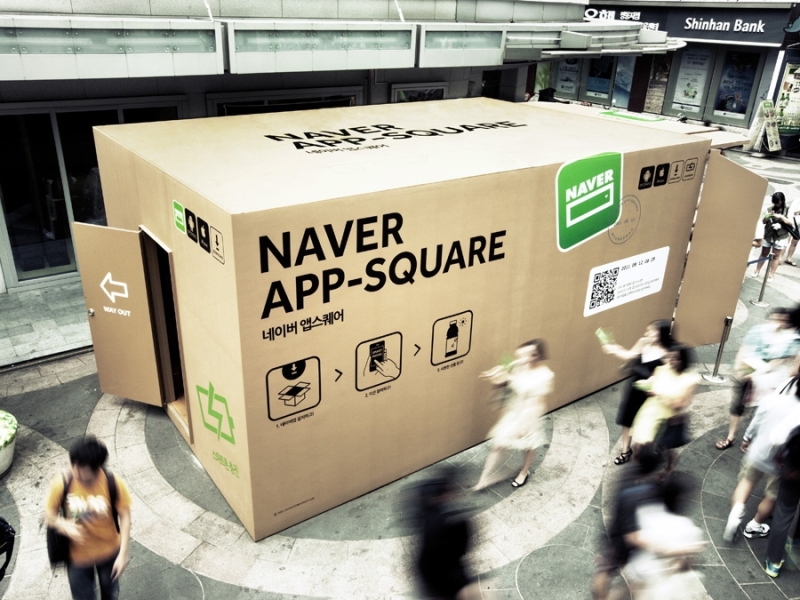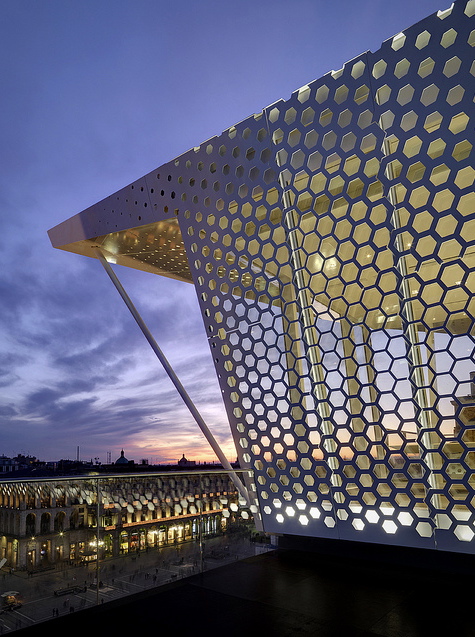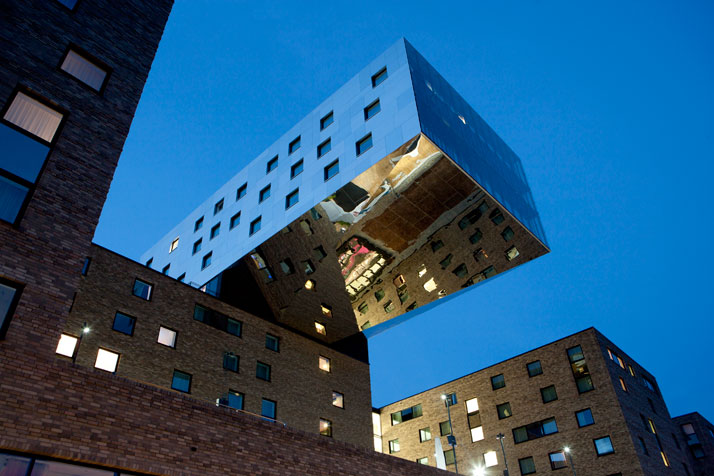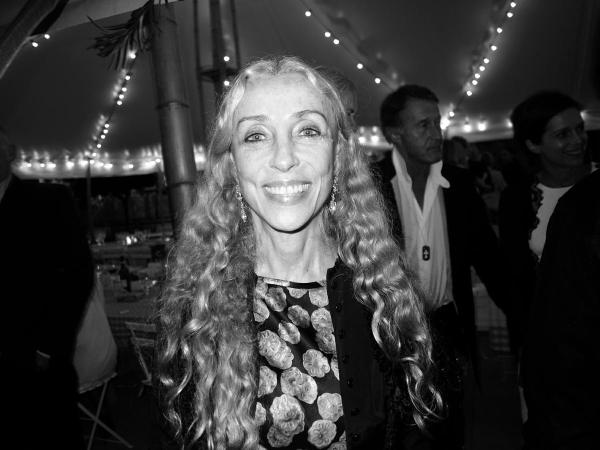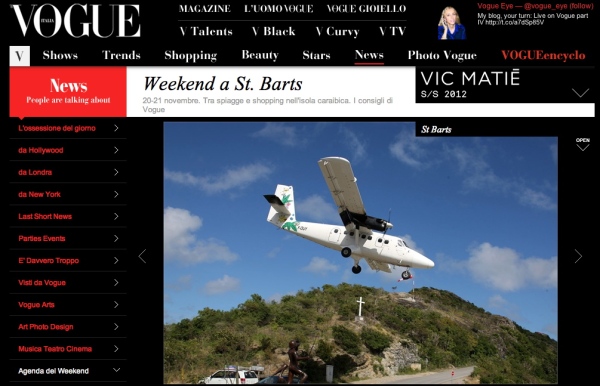A R T B U N K E R
The ART HOUSE Project St. Barth
by Dasha Zhukova + Larry Gagosian


______________________________
Damien Hirst, Globally Dotting His ‘I’
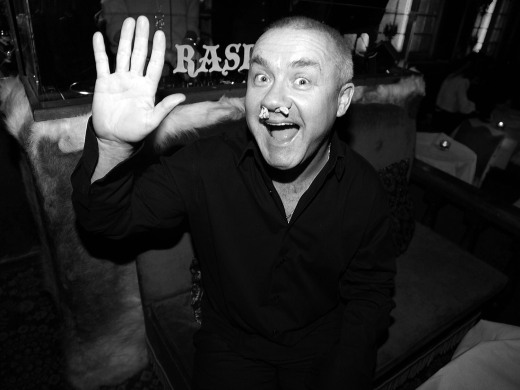

Damien Hirst the Complete Spot Paintings 1986-2011 Workers install “Bromonucleic Acid,” a Damien Hirst spot painting at Gagosian at 522 West 21st Street in Chelsea.
The good news, of course, is that they’re not all in one place. And none involve dead animals, maggots, encrusted diamonds or vats of formaldehyde. They’re mostly just grids of repeating, neatly made circles, each a different color. How bad can it be?
Well, very bad at times, and yet, at others, not bad at all, in fact rather good. In New York, where 115 of the 331 are on view in the three Gagosian galleries in the city, the quality of the art — and the experience of it — varies tremendously. Parts of Hirst New York are both visually exhilarating and accessible; you can take the kids, take friends who have never looked at art or acquaintances curious about the formal principles of abstraction. Then there are parts so redundant and oppressive as to appeal to only hard-core Hirst devotees. The New York allotment, at least, is a sideshow but one with redeeming qualities, a spectacle with benefits, which is a lot more than can be said of Mr. Hirst’s previous attention-getting shenanigans, like the all-Hirst auctions or the bejeweled skull.
Am I grading on a curve? Probably. Undoubtedly the usual knickers will be twisted by Mr. Hirst’s latest grandstanding: He’s so unimaginative, so crassly commercial, not a real artist and so forth. Mr. Hirst is the post-Warhol, post-Barnum epitome of the artist as impresario, public relations strategist, graphic designer and art director. You can find precedents for just about all of his actions in previous generations. Multiple-city gallery shows have been around since the 1980s; many artists have overproduced, and most are publicity minded. But he has rolled all this, and more, into one big, messy contradictory ball of wax and pushed it to extremes in ways that regularly drive people nuts.
On one level, the Hirst à Gogo is a blatant promotion of both the Hirst and Gagosian brands, and a sitting-duck symbol of the end-time, we’re-doing-this-because-we-can decadence that has subsumed so much of the art world — yet another instance of money celebrating itself. The show is titled “Damien Hirst the Complete Spot Paintings 1986-2011,” and would that this were so. There are more than 1,500 of these things in existence; evidently they will all be accommodated in the show’s catalog, which will live up to the title. (This is not a tome I look forward to paging through.)
But the spot-painting project is more complicated, even paradoxical. It challenges you to hold opposing ideas at the same time. Alongside the promotional character of the undertaking is an aspect of goofy honesty, generosity and even full disclosure. Mr. Hirst, or his assistants, have been making a lot of these paintings; so why not show a lot of them?
The global presentation brings to mind a worldwide rollout for the latest iWhatever. Yet it also reminds me of a weird, commercial version of the Christos’ “Gates” in Central Park, only more spread out, with a lot less orange and greater visual interest. Over the next month or so people in New York, London, Paris, Geneva, Rome, Athens, Hong Kong and Beverly Hills can go to a Gagosian outpost and have a similar Hirst experience. Suggestion: Maybe Gagosian could enhance the collective nature of the experience by having all the galleries stay open around the clock.
Not surprisingly the overblown, up-and-down quality of the whole extravaganza mirrors Mr. Hirst’s overblown, up-and-down career. Yet this is somewhat paradoxical given the narrow focus here. He is showing nothing but fields of enamel dots, smooth discs of color applied to white canvases in orderly grids at intervals equal to the diameter of the discs. The discs can be any color, except the colors can’t repeat on any given canvas (though they come extremely close), and the people making the paintings choose the colors.
The relentless evenness of formula and technique reflects Mr. Hirst’s stated desire to make paintings that seem to have been made by a machine. Yet what’s striking is the unevenness, the variations of touch and finish, and the way that even within their narrow confines the spot paintings do the usual Hirst thing: that is, they range from good to atrocious. Some of them are wonderful; some aren’t really paintings, they’re just expanses of inert spots that happen to be hanging in a gallery. The fluctuations in quality is itself a kind of affirmation of the whole idea of quality.
Up to a point it is interesting to sort through the works, figuring out why some fields of spots cohere, pulse and hold the eye, and others don’t. It is a question of several related proportions: the size of the dots, the height and width of the canvas on which they occur. The paintings with one-inch-diameter spots have an especially high rate of failure. The other huge factor is color, which is a complete wild card and, within the system that determines the paintings, an expressive loophole.
In some works the colors are routine and vapid; in others they really sing, forming rhythms in spite of the fact that they never repeat. It seems crucial that the colors have been chosen by different people; it is part of their randomness and creates a variety that might not be possible if the paintings were made by one person. In this regard Mr. Hirst’s spot paintings are more collaborations than art made by assistants. They are made not only by different hands but also by different minds, and this may be the most interesting thing about them.
By far the best New York installation is at the Gagosian on West 21st Street in Chelsea, where a mere 14 paintings ring one enormous space and function as a kind of Hirst primer. The size of the dots ranges from 1 millimeter to 36 inches in diameter, the size of the paintings from 7 inches to nearly 40 feet across. It is amazing to move up and back and consider these contracting and expanding fields of colored orbs.
At the Gagosian Madison Avenue flagship, the display of 74 Hirst paintings in different spaces really should count as four shows, and two are definitely for Hirst-maniacs only. One is the crowded suite of fourth-floor galleries, where the sameness of the paintings and the density of the hanging can make the eyes start to cross. Equally dubious is a long, narrow fifth-floor gallery, where an awkward space and a wide assortment of canvas sizes create a startlingly disjointed installation. (It’s a kind of how-not-to for beginning curators.) Much more successful is an elegantly varied selection of nine paintings in the skylighted gallery on the sixth floor. This includes the very first spot painting Mr. Hirst made, in 1986, when he was a student at Goldsmiths College in London and had not yet figured out his formula; its mass of dripping, blobby spots painted on board suggests a kind of graffiti art abstraction. And back on the fifth floor, an expansive space offers total immersion with 23 canvases, but with enough room that you can see straight.
The show at the Gagosian space on West 24th Street feels like an afterthought, a combination of leftovers and curiosities, including a suite of rather bizarre circular paintings. It is most memorable for an immense gallery presided over by several enormous canvases with equally enormous spots, some up to five feet in diameter. These works seem anomalous, but they clarify Mr. Hirst’s strengths by default. In these giants, the spots have grown into spheres that are surrounded by empty canvas and the work falls silent. The pulsing contrapuntal play of many colors is gone, and with it the sense of multiple decisions made by different minds.
DAMIEN HIRST THE COMPLETE SPOT PAINTINGS
1986-2011
Gagosian Galleries, gagosian.com.
NEW YORK Through Feb. 18.
980 Madison Avenue, between 76th and 77th Streets; (212) 744-2313
555 West 24th Street, Chelsea; (212) 741-1111
522 West 21st Street, Chelsea; (212) 741-1717.
BEVERLY HILLS Through Feb. 10.
456 North Camden Drive; (310) 271-9400.
LONDON Through Feb. 18.
6-24 Britannia Street; 44-207-841-9960.
17-19 Davies Street; 44-207-493-3020
PARIS Through Feb. 18.
4 Rue de Ponthieu; 33-1-75-00-05-92.
ROME Through March 10.
Via Francesco Crispi 16; 39-06-4208-6498.
GENEVA Through March 17.
19 Place de Longemalle; 41-22-319-36-19
ATHENS Through March 10.
3 Merlin Street; 30-210-36-40-215.
HONG KONG Through Feb. 18.
7/F, 12 Pedder Street; 852-2151-0555
______________________________________
S P A C E SBH
The Island Art House / St. Barth Carre D’Or / http://www.spacesbh.com
Curator Natalie Clifford

EX. / GIRLS, SKULLS + BUTTERFLIES
Artist : Philippe Pasqua / January 16, 2011 – February 14, 2012

Since his first exhibition in Paris in 1990, Pasqua’s work is exhibited in galleries around the world including
New York, Moscow, Hong Kong, Mexico, London, Hamburg. Pasqua is based in Paris.
He emerged as one of the major artists of his generation just being named French artist of the year.
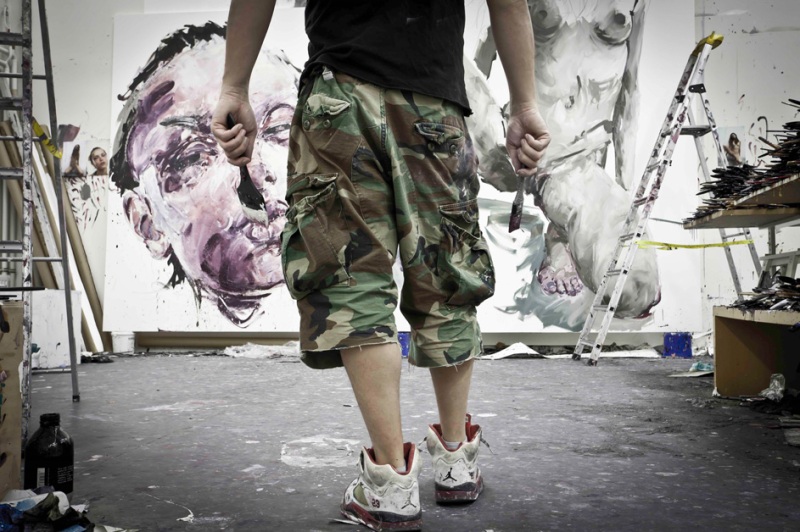
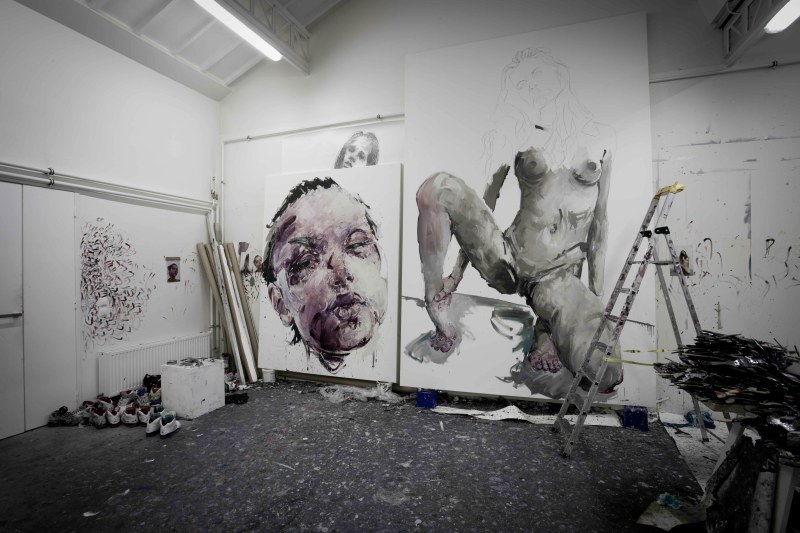
MICK MARCH AT SPACE SBH
_____________________________________________
DAVID HOCKNEY : WHY ART BECOMES ‘LESS’
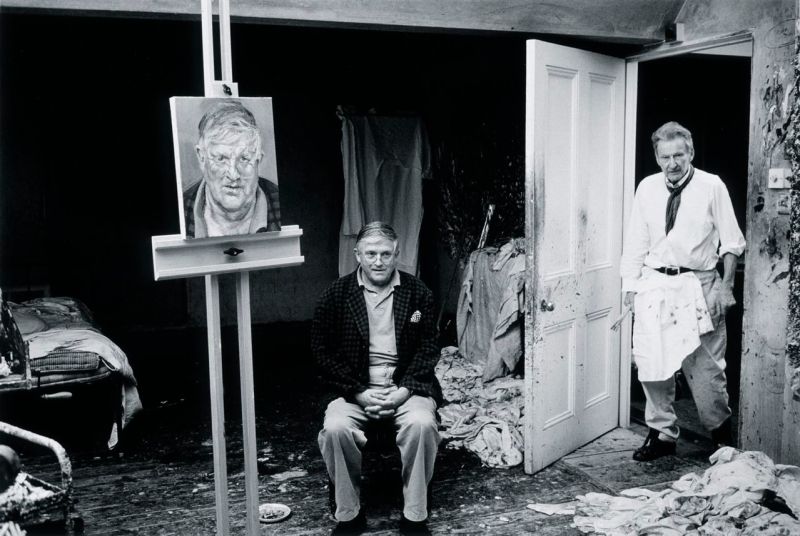
David Hockney thinks that over his lifetime art has become “less”. He blames the art establishment (museums, galleries, art schools)
for becoming over-enamoured with conceptual art: “It gave up on images a bit” the artist laments.
By which he means that the artworld ignored figurative art: paintings, sculptures, videos and installations that aim to represent the known world:
the sort of work Hockney makes: landscapes, portraits and still lifes.
Instead he feels, museums and galleries have jumped too willingly into the unmade bed of conceptual art where lights go on and off in a game of philosophical riddles.
But Hockney says “the power is with images”, and in neglecting them the artworld has diminished the very thing it aimed to protect: art.
It’s difficult to ignore Hockney’s latest images that now fill the vast galleries of the Royal Academy in London.
They are huge (two paintings are about 10-metres across), they are innovative (numerous iPad print-outs and an 18-screen film installation),
and they are very colourful (purple paths and orange tree trunks aplenty).
FOR ALL HIS OUTSPOKENNESS DAVID HOCKNEY IS A CANNY MAN
By and large, they all depict the same subject: the hills, fields, woods and roads of rural East Yorkshire. These things are subjective, but I found them potent and poetic. And exciting.
Exciting because it has been a rarity over the last half-a-century for a supremely gifted painter to take on the English landscape.
Constable and Turner did so in the 19th Century. And John Nash and Stanley Spencer rose to the challenge in the mid-20th Century. But not much has emerged since.
Maybe it’s due to the 30 years he has spent in Hollywood that Hockney blames the camera for the hiatus.
He directs a damning finger at the one-eyed monster in all its guises: photography, film and television.
He believes it is the camera that has caused many of today’s artists to forsake figurative art, having decided that a single mechanical lens can capture reality better than any painter or sculptor.
“But they’re wrong,” he told me. “A camera cannot see what a human can see, there is always something missing.” He talks about the inability of a camera to reproduce a sense of space and volume.
He makes the point that a photograph documents only a split second in time. Whereas a landscape painting, portrait or still life
might appear to be a moment immortalised in a single image, but it is in fact the culmination of days, weeks and in the case of many artists
(Cezanne, Monet, Van Gogh, Gauguin and Hockney), years of looking at a single subject.
It is a result of vast quantities of stored information, experience, jottings and spatial sensitivity that has eventually appeared in the colours,
composition and atmosphere of a final finished artwork.
For all his outspokenness David Hockney is a canny man. He twinkles when talking about why he chose to tackle the English landscape,
seeing it, I suspect, as an opportunity to make another big splash: a great subject overlooked by most other artists.
When people told him that the “landscape genre was worn out” he thought it illogical. “The way of looking at it [the landscape] might be worn out,
but the landscape can’t be,” he said. “It needs re-looking at…[to] look at it afresh.”
Which is exactly what he has done. And it looks like Hockney on Yorkshire will be a hit with the public as advance bookings are already at the upper end of the Royal Academy’s expectations.
But I wonder if the show will have a more lasting impact than simply to re-assert the general feeling that the Bradford-born painter is the country’s greatest living artist.
I think it is possible that it could mark the moment – together with the Lucian Freud exhibitionthat will be opening shortly at the nearby at the
National Portrait Gallery – when figurative art once again starts to become the dominant genre in the contemporary exhibitions and
displays mounted at the likes of Tate, Paris’s Pompidou and New York’s Museum of Modern Art.
The paintings of urban Coventry by George Shaw were shortlisted for last year’s Turner Prize. He didn’t win.
But maybe this year will be different, and an artist who produces landscapes or portraits or still lifes will carry the day?
_________________________
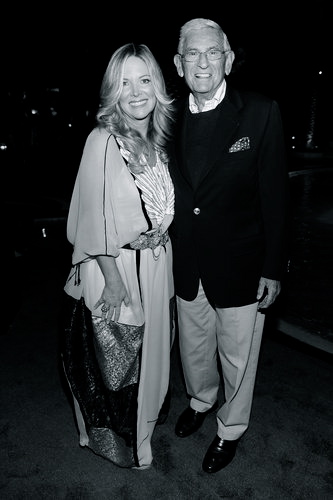
A Shark Circles Art Basel Miami Beach
THE first public sighting of Eli Broad, the 78-year-old billionaire philanthropist and art collector, came at 10:30 a.m. Wednesday. Quietly navigating the aisles of the Art Basel Miami Beach fair, along with others in the early-admission V.I.P. crowd, he moved quietly and with single-minded determination, a shark in a blue blazer with a curator beside him like a remora fish along for the ride.
“Collecting is more than just buying objects,” said Mr. Broad , who, along with his wife, Edye, maintains a mammoth personal collection of 500 major artworks, runs a foundation with another 1,500 and is the driving force (some would say pile-driving) behind the contemporary public art scene in Los Angeles. Mr. Broad was a key figure in the founding of the Museum of Contemporary Art, Los Angeles, in the 1970s and helped save it from ruin a year and a half ago. His new Broad Museum, designed by the New York firm Diller Scofidio + Renfro, will house a collection that that includes works by, among many, many others, Jeff Koons, Robert Rauschenberg and Jasper Johns.
Of course, collecting is more than just buying objects. It is a disease with no known cure. And like many representatives of the 0.001 percent here, the Broads showed little sign of easing up on their longtime habit of getting and spending, or of easing up, period. “It’s still a great fair, there’s good material and surprises and great parties,” Mr. Broad said nine hours later by the pool at the Raleigh hotel.
Banquettes and low tables had been installed there to conjure a North African mood for a dinner hosted by the kingdom of Morocco for the heavy hitters of the Los Angeles art-collecting scene. Waiters circulated carrying trays of swordfish ceviche in individual spoons. Mr. Broad waved one off and talked acquisitions.
“We bought some things” at the fair, he said. Pressed to say what, the man whose first fortune was made building tract homes, who says often that he intends for Los Angeles to “overfly” New York in cultural terms and whose baldly stated ambition is to turn Los Angeles into the global cultural capital of the 21st century mentioned an early Cindy Sherman photograph. It is probably worth noting that he already owns 120.
Three hours on, at 10:30 p.m., Mr. Broad was spotted again getting his wrist stamped at the entry to the Art.sy party. Held in a tent by the shore behind Soho Beach House, the party featured the inevitable ’80s musical mix, the usual dreadful plonk, the typical motley scrum of celebrities that included Adrien Brody and Naomi Campbell (“I come down to be with my friends,” said the model, who acquires many things, though not art), the dealer Larry Gagosian , the wealthy Russian arts patron Dasha Zhukova and a predictable assortment of the pretty young things that have inherited the spiritual mantle of Sylvia Miles.
Perhaps the name of this actress and indefatigable night owl has drifted into obscurity, but it used to be said of Ms. Miles that, if you put a potato chip on a windowsill, she would come. Those are words to live by here.
